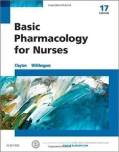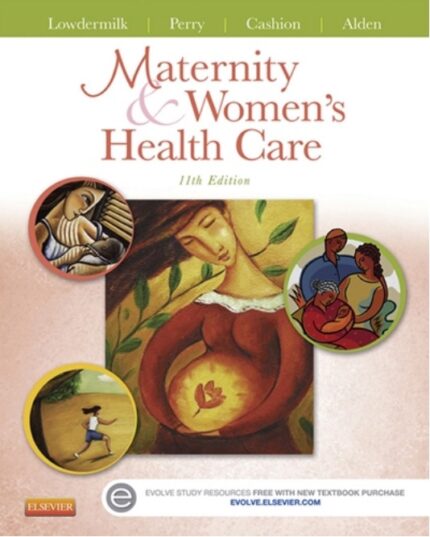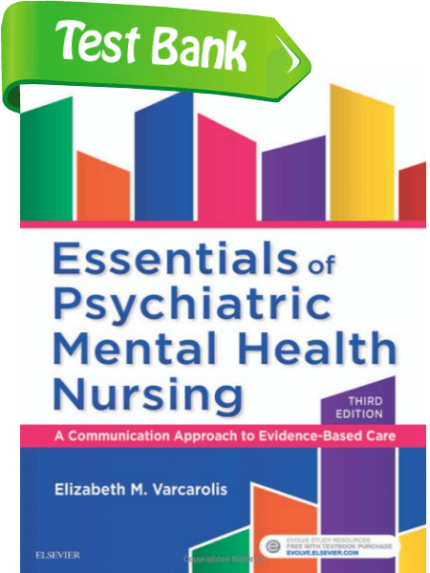In Stock
Test Bank for Pediatric Nursing A Case-Based Approach 1st Edition Tagher Knapp
Edition: 1st Edition
Format: Downloadable ZIP Fille
Resource Type: Test bank
Duration: Unlimited downloads
Delivery: Instant Download
$22.00
Test Bank for Pediatric Nursing A Case-Based Approach 1st Edition Tagher Knapp
Chapter 1: Bronchiolitis
1. Which intervention is appropriate for the infant hospitalized with bronchiolitis?
a. Position on the side with the neck slightly flexed.
b. Administer antibiotics as ordered.
c. Restrict oral and parenteral fluids if tachypneic.
d. Give cool, humidified oxygen.
ANS: D
Cool, humidified oxygen is given to relieve dyspnea, hypoxemia, and insensible fluid loss from
tachypnea. The infant should be positioned with the head and chest elevated at a 30- to 40-degree
angle and the neck slightly extended to maintain an open airway and decrease pressure on the
diaphragm. The etiology of bronchiolitis is viral. Antibiotics are given only if there is a
secondary bacterial infection. Tachypnea increases insensible fluid loss. If the infant is
tachypneic, fluids are given parenterally to prevent dehydration.
2. An infant with bronchiolitis is hospitalized. The causative organism is respiratory syncytial
virus (RSV). The nurse knows that a child infected with this virus requires what type of
isolation?
a. Reverse isolation
b. Airborne isolation
c. Contact Precautions
d. Standard Precautions
ANS: C
RSV is transmitted through droplets. In addition to Standard Precautions and hand washing,
Contact Precautions are required. Caregivers must use gloves and gowns when entering the
room. Care is taken not to touch their own eyes or mucous membranes with a contaminated
gloved hand. Children are placed in a private room or in a room with other children with RSV
infections. Reverse isolation focuses on keeping bacteria away from the infant. With RSV, other
children need to be protected from exposure to the virus. The virus is not airborne.
3. A child has a chronic cough and diffuse wheezing during the expiratory phase of respiration.
This suggests what condition?
a. Asthma
b. Pneumonia
c. Bronchiolitis
d. Foreign body in trachea
ANS: A
Asthma may have these chronic signs and symptoms. Pneumonia appears with an acute onset,
fever, and general malaise. Bronchiolitis is an acute condition caused by a respiratory syncytial
virus. The foreign body in the trachea occurs with acute respiratory distress or failure and maybe
stridor.
4. Which nursing diagnosis is most appropriate for an infant with acute bronchiolitis due to
respiratory syncytial virus (RSV)?
a. Activity Intolerance
b. Decreased Cardiac Output
c. Pain, Acute
d. Tissue Perfusion, Ineffective (peripheral)
ANS. A
Rationale 1: Activity intolerance is a problem because of the imbalance between oxygen supply
and demand. Cardiac output is not compromised during an acute phase of bronchiolitis. Pain is
not usually associated with acute bronchiolitis. Tissue perfusion (peripheral) is not affected by
this respiratory-disease process.
Rationale 2: Activity intolerance is a problem because of the imbalance between oxygen supply
and demand. Cardiac output is not compromised during an acute phase of bronchiolitis. Pain is
not usually associated with acute bronchiolitis. Tissue perfusion (peripheral) is not affected by
this respiratory-disease process.
Rationale 3: Activity intolerance is a problem because of the imbalance between oxygen supply
and demand. Cardiac output is not compromised during an acute phase of bronchiolitis. Pain is
not usually associated with acute bronchiolitis. Tissue perfusion (peripheral) is not affected by
this respiratory-disease process.
Rationale 4: Activity intolerance is a problem because of the imbalance between oxygen supply
and demand. Cardiac output is not compromised during an acute phase of bronchiolitis. Pain is
not usually associated with acute bronchiolitis. Tissue perfusion (peripheral) is not affected by
this respiratory-disease process.
Global Rationale: Activity intolerance is a problem because of the imbalance between oxygen
supply and demand. Cardiac output is not compromised during an acute phase of bronchiolitis.
Pain is not usually associated with acute bronchiolitis. Tissue perfusion (peripheral) is not
affected by this respiratory-disease process






